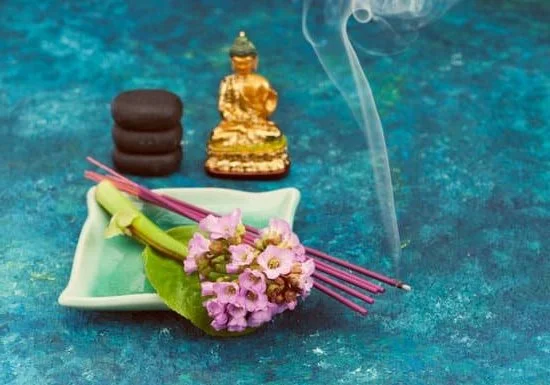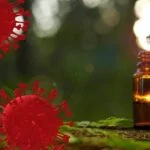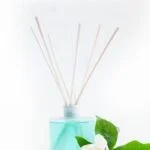In the world of natural healing, there are countless options available to improve our overall well-being. Two popular choices are essential oils and aromatherapy oils. While these terms are often used interchangeably, it is important to understand that there are distinct differences between them.
Essential oils have been cherished for centuries for their therapeutic properties and potent effects. These oils are derived from various parts of plants, such as leaves, flowers, roots, and barks, through a meticulous extraction process. On the other hand, aromatherapy oils refer specifically to the use of essential oils in the practice of aromatherapy. Aromatherapy involves using these oils to stimulate our sense of smell which can impact our mood, emotions, and overall well-being.
One key difference between essential oils and aromatherapy oils lies in their composition and extraction methods. Essential oils contain concentrated plant compounds that offer numerous health benefits when used appropriately. They possess unique chemical profiles that give them their distinct properties. In contrast, aromatherapy oils are blends that often combine essential oils with carrier or base oils to create specific scents or desired effects.
Understanding the distinction between essential oils and aromatherapy oils is crucial before delving into their uses and benefits. By gaining this knowledge, individuals can make informed choices about which oil best suits their needs and preferences for personal wellness endeavors. In this article, we will explore in detail what sets essential oils apart from aromatherapy oils, including their composition, extraction methods, uses, benefits, safety considerations, and debunking common misconceptions surrounding both types of oils.
Defining Essential Oils
Essential oils have been used for centuries in various cultures for their unique properties and benefits. These oils are derived from plants through a process of distillation or expression, which preserves the potent compounds found within the plant. Essential oils are highly concentrated and contain the natural fragrance, or “essence,” of the plant from which they are extracted.
The Origins of Essential Oils
The use of essential oils dates back to ancient times, with evidence found in civilizations such as Egypt, China, and India. In Egypt, hieroglyphics on temple walls depict scenes of aromatic plant distillation and mention their use in religious rituals and healing practices. In China and India, essential oils were used as part of traditional medicine systems such as Ayurveda and Traditional Chinese Medicine.
The Unique Properties of Essential Oils
One key characteristic of essential oils is their volatile nature. This means that they easily evaporate into the air and can be detected by our sense of smell. Each essential oil has its own distinct aroma profile due to its specific combination of chemical compounds. These compounds are believed to possess various therapeutic properties that can support physical, mental, and emotional well-being.
Furthermore, essential oils have antimicrobial properties that can help protect plants from pathogens and pests. When used topically or diffused into the air, these properties may also provide benefits to humans by supporting immune function or purifying the environment.
It’s important to note that while essential oils have many potential benefits, they should be used with caution and proper knowledge. The concentration level of essential oils requires dilution before applying directly to the skin to avoid adverse reactions. Additionally, not all essentials oils are safe for internal use or safe for certain individuals such as pregnant women or children.
Exploring Aromatherapy Oils
Aromatherapy oils, also known as essential oils, have been used for centuries for their powerful healing properties. These natural substances are derived from various plant materials, such as flowers, leaves, stems, and roots. Unlike synthetic fragrances or perfumes, aromatherapy oils are extracted directly from plants through a process called distillation.
One of the main reasons why aromatherapy oils have gained popularity in recent years is their ability to promote physical and emotional well-being. The therapeutic benefits of these oils come from their unique chemical composition, which contains volatile compounds that possess medicinal properties. When inhaled or applied to the skin, these compounds can enter the bloodstream and interact with the body’s systems to promote healing and relaxation.
Some of the most common healing properties of aromatherapy oils include:
- Relaxation and stress relief: Many aromatherapy oils have calming effects on the mind and body, helping to reduce stress levels, anxiety, and insomnia. Oils like lavender, chamomile, and bergamot are widely used for their relaxation properties.
- Pain management: Certain aromatherapy oils have analgesic properties that can help alleviate pain. Oils like peppermint and eucalyptus are commonly used for headaches and muscle aches.
- Skin care: Aromatherapy oils can also be beneficial for the skin due to their anti-inflammatory, antiseptic, and moisturizing properties. Oils like tea tree oil and rosehip oil are often incorporated into skincare routines to improve the appearance of acne-prone or aging skin.
To make the most out of aromatherapy oils’ healing properties, it’s important to choose high-quality oils and use them safely. Some key considerations when using aromatherapy oils include diluting them properly before topical application on the skin, avoiding direct ingestion without professional guidance, conducting patch tests if you have sensitive skin or allergies, and following recommended guidelines for diffusing or inhaling oils. When used correctly, aromatherapy oils can provide powerful healing benefits for both the body and mind.
Composition and Extraction
One of the key differences between essential oils and aromatherapy oils lies in their composition. Essential oils are highly concentrated plant extracts derived from various parts of plants, including flowers, leaves, bark, and roots. These oils contain the volatile aromatic compounds responsible for the unique fragrance and therapeutic properties associated with each plant. On the other hand, aromatherapy oils are typically synthetically produced or diluted versions of essential oils that are specifically formulated for use in aromatherapy practices.
The extraction methods used to obtain essential oils also contribute to their distinctiveness. There are several methods employed to extract essential oils, including steam distillation, cold pressing, solvent extraction, and enfleurage. Steam distillation is one of the most common and traditional methods used for extracting essential oils.
It involves passing steam through plant material to separate the oil from its components. The resulting mixture enters a condenser where it cools down and separates into water and oil. The oil can then be collected and used.
In contrast, aromatherapy oils are often obtained through synthetic processes or blending different types of essential oils with carrier oils. Synthetic production may involve combining chemicals to mimic specific scents found in nature or creating completely artificial fragrances. Blending different types of essential oils is another method used to create aromatherapy blends tailored to achieve certain therapeutic effects.
During this process, carefully selected essential oils are mixed together according to specific ratios to achieve a desired aroma or therapeutic benefit. Additionally, these blends are often diluted in carrier oils like almond oil or jojoba oil before being used in massage or topical applications.
Production Methods
Distillation: The Traditional Method
One of the most common methods used to extract essential oils is distillation. This traditional method has been employed for centuries and involves heating plant material, such as flowers, leaves, or bark, to release their aromatic compounds. The steam produced during the heating process carries the essential oil molecules up into a cooling chamber where they condense and separate from the water. The resulting liquid is a highly concentrated form of the essential oil.
Distillation can be further divided into two main types: water distillation and steam distillation. Water distillation is suitable for plant materials that contain no heat-sensitive compounds that could be damaged by steam. On the other hand, steam distillation utilizes steam to gently extract essential oils from heat-sensitive plants without causing damage. Both methods yield high-quality essential oils with different fragrance profiles and properties.
Cold-Press Extraction: Capturing Citrus Essential Oils
Cold-press extraction is another popular method used specifically for extracting citrus essential oils. This simple yet effective technique involves pressing or squeezing the rinds of citrus fruits to release their aromatic oils. The pressure applied helps rupture the oil-filled glands in the fruit peel, allowing the essential oil to be released.
One advantage of cold-press extraction is that it does not involve any heat, keeping the volatile components of citrus oils intact. This results in a fresher and more vibrant aroma compared to other extraction methods. Additionally, cold-press extraction is typically faster than distillation methods, making it an efficient choice for large-scale production.
Other Modern Extraction Techniques
In addition to traditional distillation and cold-press extraction, modern technology has introduced various innovative methods for extracting essential oils. Some examples include solvent extraction using chemicals like hexane or ethanol, carbon dioxide (CO2) extraction, and enfleurage. These methods offer unique advantages and are often used for specific types of plants or desired properties of the essential oils.
Solvent extraction is commonly used for delicate flowers that cannot withstand the heat of distillation. It involves dissolving the plant material in a solvent to extract the essential oil. Carbon dioxide (CO2) extraction, on the other hand, utilizes high pressure and low temperatures to produce superior-quality essential oils without leaving any solvent residue.
Enfleurage is a traditional method primarily used to extract highly aromatic oils from flowers. It involves placing the flower petals onto a solid fat, such as animal fat or vegetable oil, allowing them to infuse their fragrance into the medium over time. This technique requires patience but can result in exquisite floral essential oils.
By understanding these different production methods, consumers can gain insights into the quality and characteristics of essential oils they encounter in the market. Whether it’s through traditional distillation, cold-press extraction, or modern techniques like solvent extraction or CO2 extraction, each method contributes to capturing the unique aromas and therapeutic properties of essential oils.
Choosing Essential Oils
One of the key factors to consider when choosing essential oils is their quality. It is important to look for oils that are 100% pure and have not been diluted or adulterated with other substances. High-quality essential oils will often be labeled as “therapeutic grade,” indicating that they meet certain standards for purity and potency.
Another factor to consider is the source or origin of the essential oil. Different plants, climates, and growing conditions can affect the chemical composition and therapeutic properties of an oil. Some people may prefer oils sourced from specific regions known for producing high-quality oils, such as lavender from Provence or tea tree oil from Australia.
The method of extraction used to obtain the essential oil can also impact its quality and effectiveness. Common methods include steam distillation, cold pressing, and solvent extraction. Steam distillation is one of the most common methods and is often considered a reliable way to extract essential oils without compromising their properties.
In addition to these factors, personal preference and intended use should also be taken into account when selecting essential oils. Certain oils may have specific properties that make them more suitable for certain purposes. For example, lavender oil is often used for relaxation and sleep support, while peppermint oil can be invigorating and stimulating.
Overall, choosing essential oils involves considering factors such as quality, source, extraction method, personal preference, and intended use. By taking these factors into account, individuals can make informed choices when selecting essential oils for their wellbeing.
| Factors to Consider in Essential Oil Selection |
|---|
| Quality: Look for 100% pure oils labeled as “therapeutic grade.” |
| Source: Consider the origin of the oil and its associated climate and growing conditions. |
| Extraction Method: Determine the method used to extract the oil, such as steam distillation or cold pressing. |
| Personal Preference: Take into account individual preferences and desired scents or therapeutic properties. |
| Intended Use: Select oils that align with the specific purposes and benefits desired. |
Aromatherapy Oil Selection
When it comes to selecting aromatherapy oils, there are several factors to consider in order to find the perfect blend that suits your needs. The key is to understand your desired outcome and choose oils with properties that align with those goals. Here are some tips and tricks to help you in your search for the perfect aromatherapy blend.
- Identify Your Intention: Before choosing any aromatherapy oil, it’s important to identify your intention or what you hope to achieve through its use. Are you looking for relaxation, stress relief, or a mood boost? Different oils have different effects on the mind and body, so understanding your goal will guide you towards the right selection.
- Consider the Scent Profile: Aromatherapy oils come in a wide variety of scents, from floral and citrusy to earthy and woody. Consider whether you prefer a calming scent like lavender or chamomile for relaxation, or a refreshing scent like peppermint or eucalyptus for an energizing effect. Trust your senses and choose scents that resonate with you.
- Research Essential Oils: Familiarize yourself with different essential oils and their properties before making a selection. For example, lavender oil is known for its calming properties, while lemon oil is invigorating and uplifting. Understanding the unique qualities of various essential oils will help you create blends customized to your specific needs.
| Essential Oil | Properties |
|---|---|
| Lavender | Calming, relaxing |
| Peppermint | Energizing, refreshing |
| Chamomile | Soothing, stress-relieving |
| Lemon | Uplifting, revitalizing |
Remember, creating the perfect aromatherapy blend is a personal journey. It may take some experimentation to find the oils and combinations that work best for you. By considering your intention, scent preferences, and researching essential oils, you can enhance your well-being through the power of aromatherapy.
Uses and Benefits
Both essential oils and aromatherapy oils have unique uses and benefits that contribute to overall wellbeing. Essential oils are widely known for their therapeutic properties and have been used for centuries in various cultures for their healing effects on the mind, body, and spirit.
Aromatherapy oils, on the other hand, are blends of essential oils with carrier oils or other base ingredients, designed specifically for use in aromatherapy practices. In this section, we will explore the specific uses and benefits of both essential oils and aromatherapy oils.
Essential oils are concentrated plant extracts obtained through steam distillation or cold-pressing methods. These pure essences capture the volatile compounds found in different parts of plants, such as flowers, leaves, bark, or roots. Due to their potency, essential oils have a wide range of applications.
They can be used topically when diluted with carrier oils to alleviate various skin conditions or added to bathwater for relaxation purposes. When inhaled through diffusers or inhalers, these oils can support emotional well-being by reducing stress and promoting a positive mood.
Aromatherapy oils combine essential oils with other ingredients like carrier oils or creams to create specialized blends tailored to specific needs. These blends may focus on certain skin concerns like acne or aging, or they may target emotional issues like anxiety or fatigue.
Aromatherapy oil blends are commonly used in massage therapy as they can enhance the efficacy of therapeutic techniques while providing relaxation and rejuvenation benefits. Another popular application is through inhalation using diffusers or personal inhalers to create an aromatic environment that promotes relaxation, mental clarity, or uplifting energy.
Safety Considerations
When using essential oils and aromatherapy oils, it is important to take certain safety considerations into account. While these oils have many potential benefits, improper use can lead to adverse reactions or health risks. Here are some important precautions to keep in mind when using essential oils and aromatherapy oils:
- Dilution: Essential oils are highly concentrated substances that can cause skin irritation or sensitization if used undiluted. It is crucial to dilute essential oils properly before applying them topically.
A general rule of thumb is to mix 1-2 drops of essential oil with 1 tablespoon of a carrier oil such as coconut oil or almond oil. This dilution ratio may vary depending on the specific oil and individual sensitivity, so it is always recommended to do a patch test before using any new essential oil. - Avoid Ingestion: While some essential oils may be safe for consumption under the guidance of a qualified professional, it is generally not recommended to ingest essential oils without proper knowledge and expertise. Ingesting certain essential oils can be toxic and harmful to your health. Always consult a certified aromatherapist or healthcare practitioner before considering internal use of any essential oil.
- Allergies and Sensitivities: Essential oils, like any other substance, can trigger allergic reactions or sensitivities in some individuals. It is vital to know your personal allergy history before using any essential oil topically, especially if you have had allergic reactions in the past or are prone to allergies.
Perform an allergy test by applying a diluted drop of the essential oil on a small area of skin and observe for any adverse reactions such as redness, itching, or swelling. - Phototoxicity: Some citrus-based essential oils, such as bergamot or grapefruit, can cause skin sensitivity when exposed to sunlight or UV rays immediately after application. This condition is known as phototoxicity. To avoid this reaction, it is advised to avoid direct sun exposure or tanning beds for at least 12 to 24 hours after applying phototoxic essential oils.
By following these safety considerations, you can ensure a safe and enjoyable experience when using essential oils and aromatherapy oils. It is always wise to consult with a qualified aromatherapist or healthcare professional if you have any concerns about the proper usage or potential risks associated with these powerful oils.
Debunking Myths
Understanding the Difference: Essential Oils vs. Aromatherapy Oils
There is often confusion surrounding the terms “essential oils” and “aromatherapy oils,” with many people mistakenly using them interchangeably. However, it is important to understand that these are not the same thing. While both essential oils and aromatherapy oils are derived from plants and offer therapeutic benefits, there are distinct differences between the two.
Composition and Properties of Essential Oils
Essential oils are concentrated plant extracts that capture the volatile compounds found in various parts of plants such as flowers, leaves, stems, or roots. These volatile compounds contribute to the aroma and natural properties of the plant. Essential oils are highly potent and can be either extracted through steam distillation or cold-press extraction methods.
One key characteristic of essential oils is their complexity. They consist of numerous chemical constituents that work synergistically to produce unique therapeutic effects. For example, lavender essential oil contains linalool, which has calming and soothing properties, while tea tree essential oil contains terpinen-4-ol, known for its antimicrobial activity.
It’s important to note that essential oils should never be ingested without proper guidance from a healthcare professional, as they can be toxic when consumed internally in large amounts. Additionally, due to their high concentration and potency, it is recommended to dilute essential oils before applying them topically.
Aromatherapy Oils: The Art of Blending
In contrast to essential oils, aromatherapy oils are often pre-blended combinations of essential oils with carrier or base oils. The main purpose of aromatherapy oils is to create a pleasant scent for relaxation or mood enhancement rather than providing specific therapeutic benefits associated with individual plant compounds.
Aromatherapy oil blends are formulated by mixing different essential oils together according to a desired aroma or effect. For example, a blend of lavender, bergamot, and chamomile essential oils may be used for promoting restful sleep, while a blend of citrus oils like lemon and orange can create an uplifting and energizing atmosphere.
It is important to note that some aromatherapy oils may contain artificial fragrances or synthetic additives to enhance their fragrance. Therefore, it is crucial to choose high-quality aromatherapy oils that are made from pure and natural ingredients to ensure the best results in terms of both aroma and therapeutic benefits.
Conclusion
In conclusion, understanding the world of aromatherapy oils and essential oils is crucial for making informed choices for your wellbeing. By delving into the age-old secrets of essential oils, we have uncovered their powerful healing properties and unraveled the process of extracting them. Essential oils stand apart from aromatherapy oils due to their specific composition and extraction methods.
When it comes to choosing essential oils, it is important to consider factors such as purity, quality, and therapeutic benefits. By understanding these considerations, you can ensure that you are selecting essential oils that will provide the desired effects for your health and wellness needs. On the other hand, finding the perfect aromatherapy blend requires knowledge about different aromatic profiles and how they can be combined to create a harmonious scent experience.
Both essential oils and aromatherapy oils offer unique uses and benefits. From promoting relaxation and reducing stress to alleviating pain and boosting immunity, these natural remedies have been used for centuries to improve overall wellbeing. However, it is crucial to exercise caution when using these oils due to their concentrated nature. Following safety guidelines and consulting with a healthcare professional can help prevent any potential adverse reactions.
By debunking common misconceptions between essential oils and aromatherapy oils, we can better understand how each type differs in terms of composition, extraction methods, and uses. Armed with this knowledge, you can confidently incorporate these incredible gifts from nature into your daily life to support your physical, emotional, and mental health. Whether you choose essential oils or aromatherapy blends, making informed choices will empower you on your journey towards optimal wellbeing.
Frequently Asked Questions
Is aromatherapy oil the same as essential oil?
Aromatherapy oil and essential oil are not exactly the same thing. Aromatherapy oil is a broader term that encompasses a mixture of essential oils and other carrier oils. These carrier oils dilute the concentration of essential oils to make them safer for use on the skin or inhaled.
Essential oils, on the other hand, are highly concentrated extracts derived from plants, flowers, or herbs through processes like distillation or cold-pressing. While essential oils can be used in aromatherapy, they are often diluted with carrier oils before application to prevent skin sensitivity or irritation.
Do essential oils work for aromatherapy?
Yes, essential oils have been used for centuries in aromatherapy to promote physical and emotional well-being. When used correctly, essential oils can provide various therapeutic benefits such as relaxation, stress relief, improved mood, pain relief, or even better sleep.
The volatile compounds present in essential oils can stimulate our olfactory system (our sense of smell) and trigger certain responses in our brain that influence our emotions and physiology. However, it’s important to note that while many people find aromatherapy beneficial, scientific evidence supporting its effectiveness is limited for some conditions and more research is needed.
Can I use aromatherapy oils on my skin?
Whether you can use aromatherapy oils directly on your skin depends on the type of oil and its intended use. Some essential oils are safe to apply topically when appropriately diluted with carrier oils; however, others may cause skin irritation or sensitization if used undiluted or without proper guidance. It’s crucial to remember that individual sensitivities vary, so patch testing a small area of skin is recommended before applying any aromatic oil to larger areas of your body.
Additionally, there are specific precautions for using certain essential oils during pregnancy or with certain medical conditions. Therefore, it’s always advisable to consult a qualified aromatherapist or healthcare professional who can guide you on which aromatherapy oils are safe for topical use based on your specific needs.

Are you looking for a natural way to improve your health and wellbeing?
If so, aromatherapy may be the answer for you.





